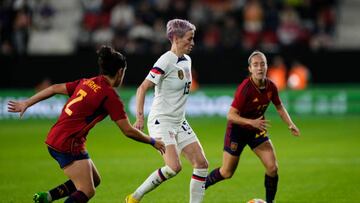FIFA Women’s World Cup 2023 draw: how will it work?
Having two hosts, Australia and New Zealand, means that next year’s tournament will work a little differently.

The city of Auckland, New Zealand will be the proud host of the FIFA Women’s World Cup draw this Saturday. After a long process of qualification for many teams - some of which has not finished - 29 sides (plus those 3 that are yet to qualify) will finally find out their World Cup Group Stage rivals.
Some people’s idea of crazy and fun is another person’s impossible-to-keep-still box of mad kittens, and having two hosts makes this whole procedure even more of a delight to grasp. This simple explainer will help to show that FIFA have not completely lost their marbles with the whole thing.
FIFA’s pots, groups and seeds
For now, the teams are currently split into 4 seeded groups, based on FIFA rankings. Spain and the USWNT, for example, are both in Pot 1.
All four seeded pots are currently full, except for number 4, which has 3 spaces empty. These will soon be occupied by the winners of the play-offs (scheduled to be played from 17 to 23 February 2023).
Deep breaths, this is where the spider web begins, so I’ll do my best not to get caught up.
The official guidelines from FIFA state that both hosts will occupy a place in the top seed; New Zealand will be given the first slot in Group A and Australia will have the same position in Group B. Then, the remaining 6 teams from the first seeded pot will be drawn into the other groups. All the teams from this seeded pot will be given the top space in the group; the number 1 ball will be a different colour to make sure there are no mistakes.
Once the top seeds have been decided, the second seeds will be drawn and given group letters and numbers, signalling which group they will go in (the letters) and which position they will be in the group before it begins (the numbers).
Are there any exceptions to the restrictions?
Normally, FIFA like to keep teams separated geographically, meaning that no teams from the same confederation can play each other in the group stages (just like UEFA do in the Champions League). However, since there are 11 teams from Europe (possibly even 12 depending on who wins the play-offs), FIFA has decided to make an exception and allow for a maximum of two teams from Europe in each group. This means that 3 out of the 8 groups will have two European teams.
In terms of the other confederations from the play-offs being put into pot 4 along with teams from the same region, FIFA has decided that this is not a problem and will be allowed (as long as it does not exceed 2 per group). We thank them for that.
Find out how to watch the draw here.





